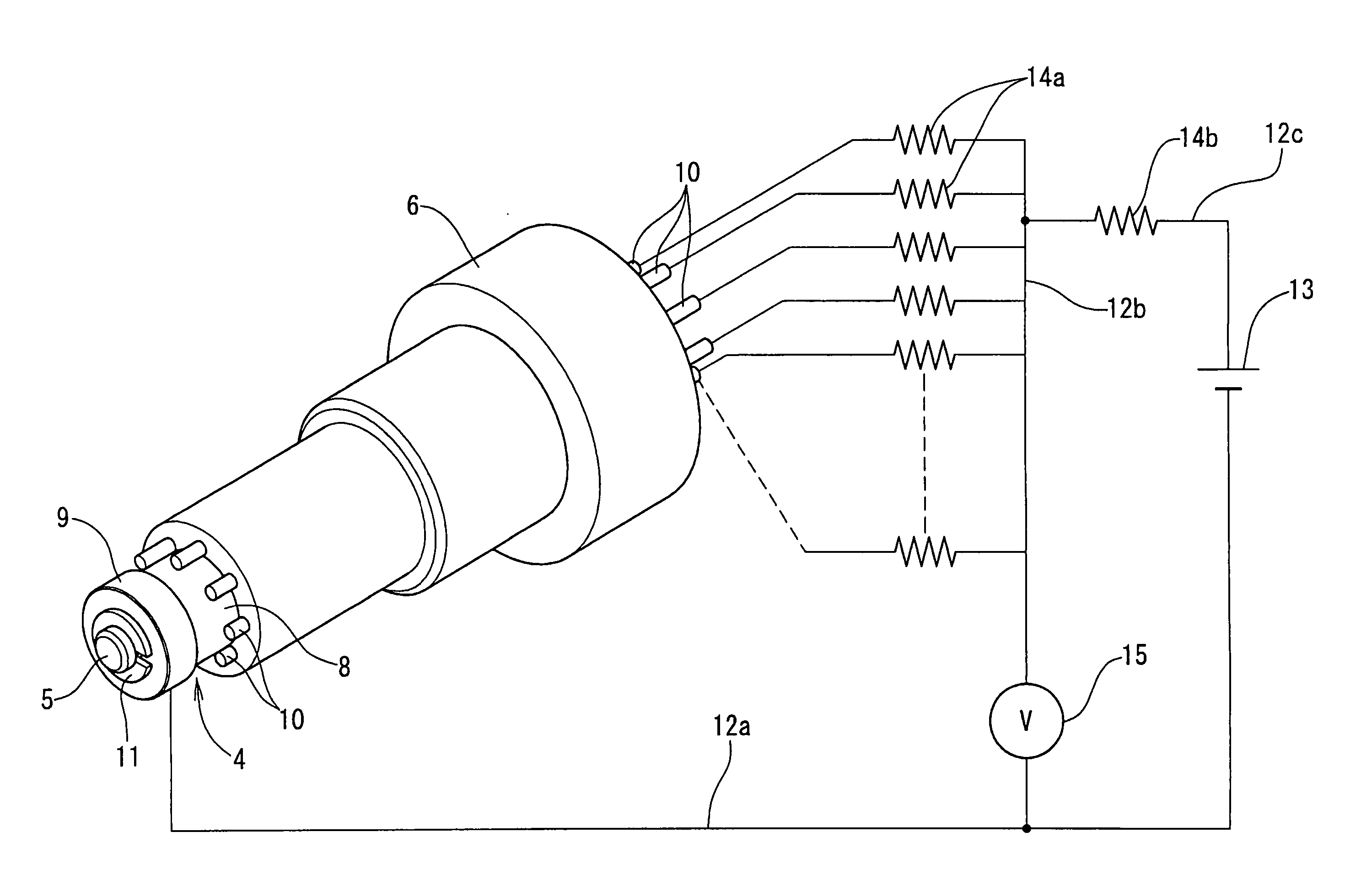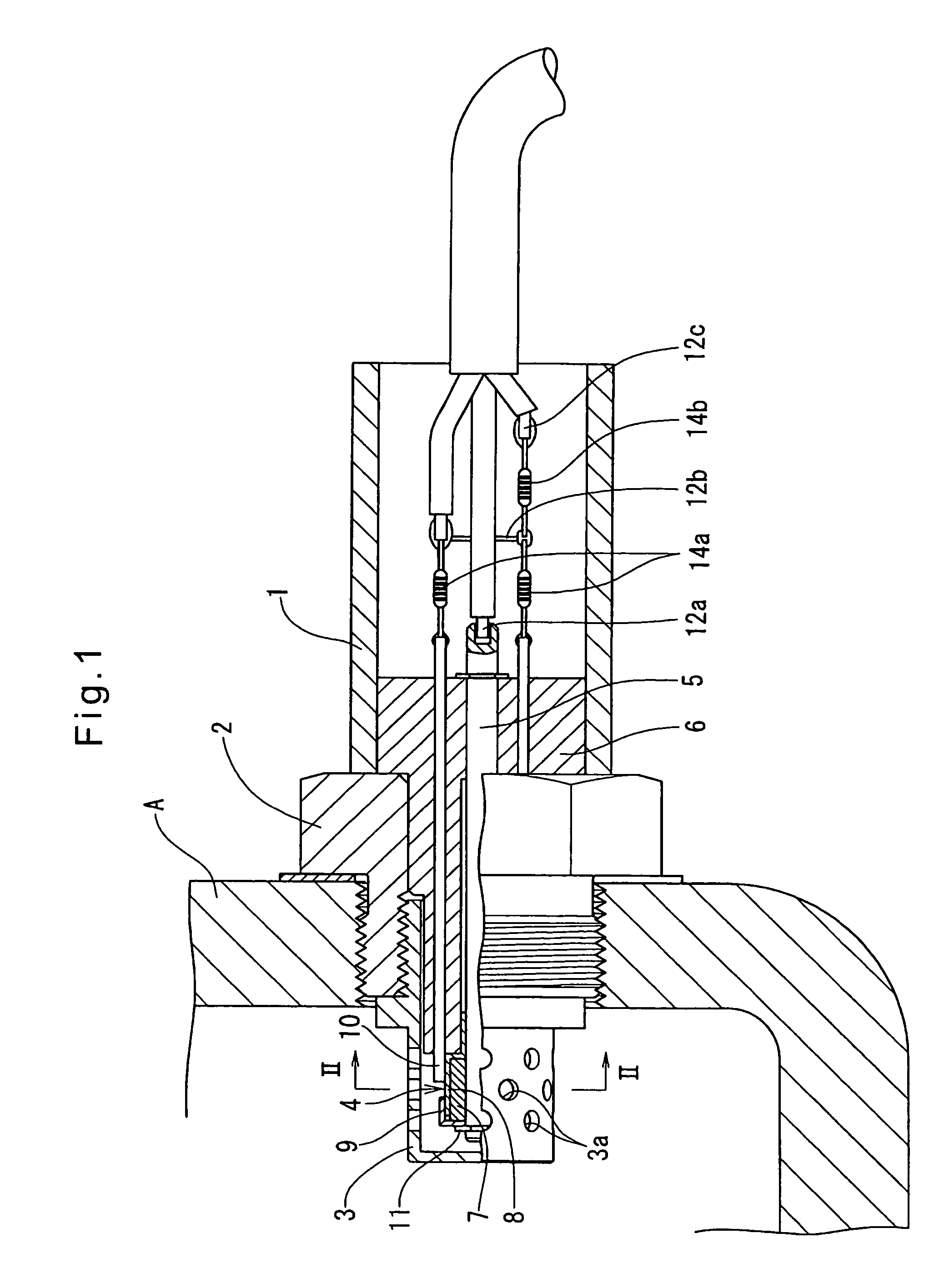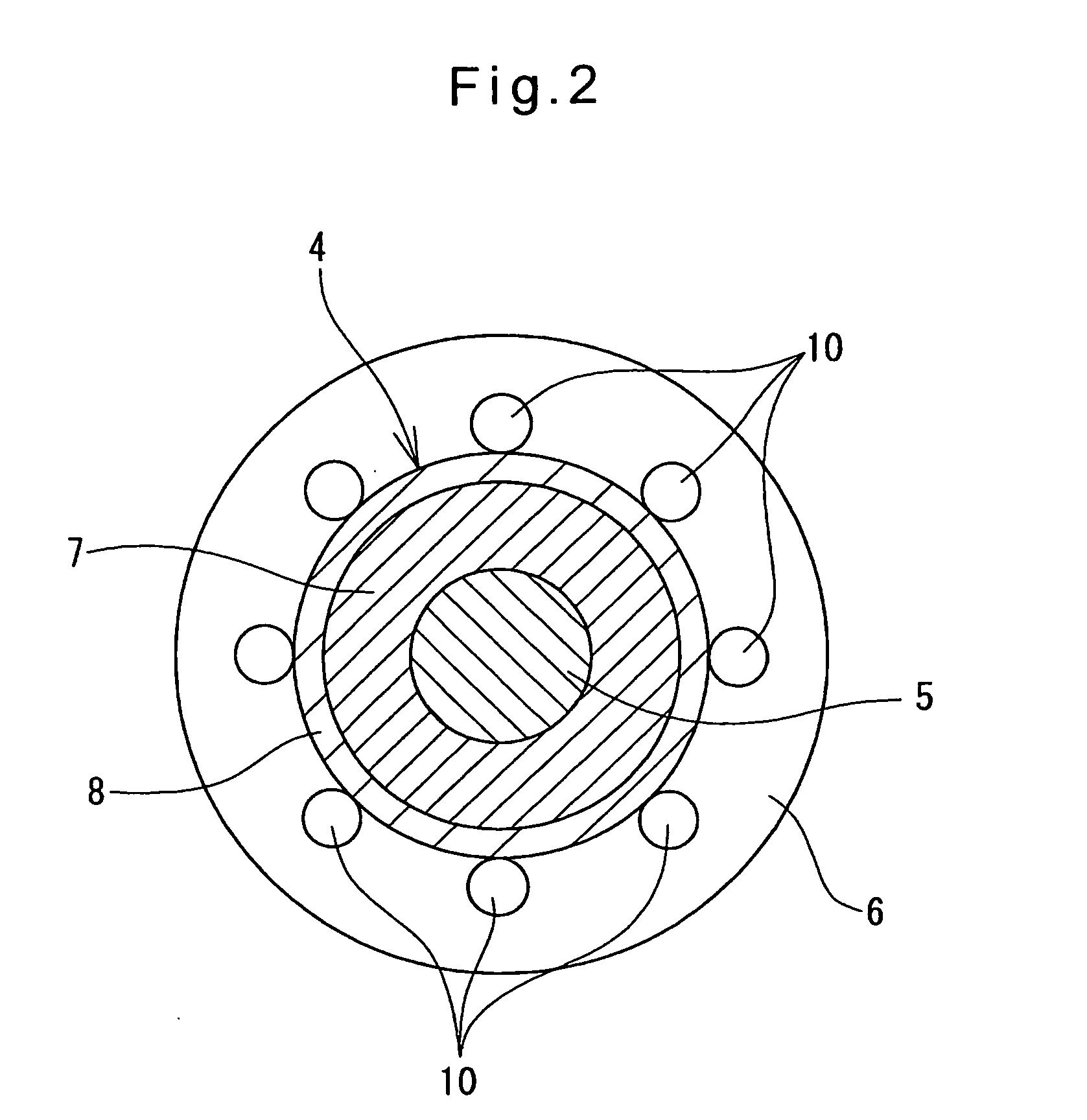Oil condition sensor
a condition sensor and oil technology, applied in the direction of resistance/reactance/impedence, instruments, material analysis, etc., can solve the problems of inability to accurately and reliably detect the resistance between the electrodes, the resistance of resistive materials tends to be internally stressed, and the inability to accurately determine the degree of oil contamination, etc., to achieve the effect of accurate determination of the degr
- Summary
- Abstract
- Description
- Claims
- Application Information
AI Technical Summary
Benefits of technology
Problems solved by technology
Method used
Image
Examples
Embodiment Construction
[0017] Now the embodiments of the invention are described with reference to the drawings. FIGS. 1-4 show the oil condition sensor of the first embodiment. It is used to determine the degree to which automotive transmission oil is contaminated with metallic powders, and includes, as shown in FIG. 1, a nut 2 threaded into a lower portion of a side wall of an oil pan A for transmission oil, a casing 1 fixed to the nut 2 outside the oil pan A, and a head cover 3 threaded into the nut 2 inside of the oil pan A so as to be immersed in the oil. A sensor head assembly 4 is mounted in the head cover 3. The head cover 3 is formed with a plurality of holes 3a through which oil in the oil pan A can flow into the head cover 3.
[0018] A rod 5 made of a conductive material extends through the casing 1 and is held in position so as to be coaxial with the casing 1 by a holder 6 received in the casing 1. A ring-shaped permanent magnet 7 is fitted around the tip of the rod 5 protruding from the holder...
PUM
| Property | Measurement | Unit |
|---|---|---|
| power | aaaaa | aaaaa |
| distance | aaaaa | aaaaa |
| resistance | aaaaa | aaaaa |
Abstract
Description
Claims
Application Information
 Login to View More
Login to View More - R&D
- Intellectual Property
- Life Sciences
- Materials
- Tech Scout
- Unparalleled Data Quality
- Higher Quality Content
- 60% Fewer Hallucinations
Browse by: Latest US Patents, China's latest patents, Technical Efficacy Thesaurus, Application Domain, Technology Topic, Popular Technical Reports.
© 2025 PatSnap. All rights reserved.Legal|Privacy policy|Modern Slavery Act Transparency Statement|Sitemap|About US| Contact US: help@patsnap.com



